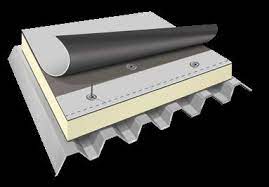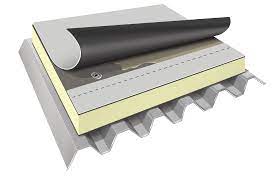(This Post has been updated for 2024)
If you’ve seen a bright white roof, then you may be familiar with TPO
As we usher in the year 2024, it’s a perfect time to revisit the ever-evolving world of roofing materials and solutions, particularly focusing on TPO (Thermoplastic Polyolefin) roofing. If you’ve noticed a gleaming white roof on a commercial building, chances are it’s TPO roofing, a single-ply membrane that has been steadily gaining recognition and popularity over the years. In this article, we’ll delve into why TPO roofing has become the go-to choice for many in the construction industry and explore its myriad benefits in the context of today’s roofing landscape.
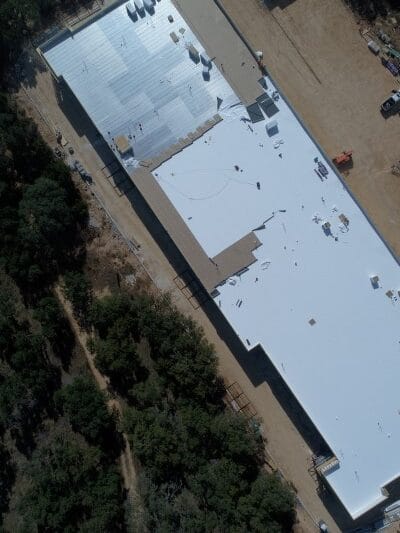
What You Need to Know Buying a TPO Roof in 2024
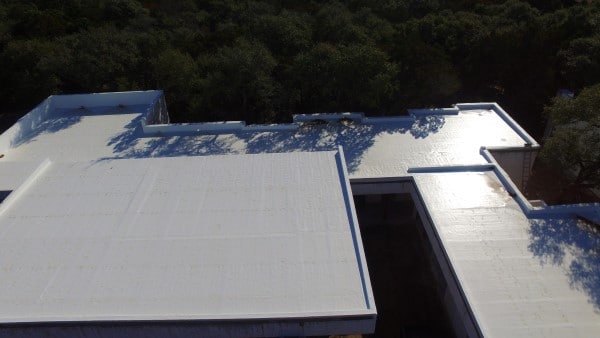
The Benefits of TPO Roofs in 2024
- Economical and Durable: TPO roofing remains an economical and long-lasting option for commercial buildings. Its cost-effectiveness and durability have made it a top choice for many property owners.
- Compliance with Industry Standards: TPO roofing boasts excellent physical properties that meet the stringent requirements of industry standards. This reliability has made it a trusted option for building owners and general contractors alike.
- Sustainability Features: TPO roofing aligns with sustainability goals, making it an environmentally conscious choice. Its sustainable features contribute to a greener and more energy-efficient building envelope.
- Lightweight and Quick Installation: Being a single-ply membrane, TPO roofing is lightweight, allowing for easy and quick installation. This not only saves time but also reduces labor costs.
- Enhanced Fire Protection: Compared to asphalt roofs, which are highly flammable, TPO offers improved fire protection. This can be a crucial safety consideration for commercial properties.
- Strength and Resistance: TPO roofs exhibit high tear strength, tensile strength, and puncture resistance, ensuring they can withstand various weather conditions and potential impacts.
- Ease of Repair: TPO roofs are easy and cost-effective to repair. This reduces maintenance expenses and ensures that minor issues can be addressed promptly.
- Cost-Effective Installation: TPO roofing often eliminates the need for tear-off during installation, reducing overall costs. This is particularly advantageous for buildings looking to replace their flat roofs.
In 2024, as the construction industry continues to evolve, the value proposition of TPO roofing remains strong. Its cost-efficiency, low maintenance requirements, durability, and sustainability features position it as an ideal roofing solution for both new construction and roof replacement projects. As commercial property owners and builders seek roofing options that offer reliability, cost-effectiveness, and environmental responsibility, TPO roofing continues to shine brightly as a top contender in the market, contributing to the longevity and sustainability of commercial structures.
Costs -Maintenance -Durability -Ease of installation It’s easy to see how much more affordable it can be to install a flat membrane rather than build up multiple layers on top of each other. When considering the long term benefits, it becomes clear why so many builders and owners choose TPO
.
In 2024, let’s take a closer look at the various methods used for TPO roofing installation:
TPO is Usually installed one of 3 ways
- Mechanically Fastened Installation: This method involves the use of screws and steel plates to securely fasten the TPO membrane to the roof deck. It provides a reliable attachment, ensuring the membrane stays in place even in challenging weather conditions.
- Fully Adhered Installation: With a fully adhered installation, a specialized adhesive known as TPO adhesive is evenly spread on both the roof deck and the TPO membrane. After applying the adhesive, it is allowed to dry until it reaches a tacky consistency. Once tacky, the membrane is meticulously adhered to the deck, taking care to prevent the formation of trapped air that could lead to the creation of unsightly bubbles. This method offers a strong and seamless bond, ensuring the membrane remains securely in place.
- Ballast Installation: Ballast installation involves adding weight or ballast material to the roof, typically using gravel or stones. The ballast serves to keep the TPO membrane securely anchored, even in windy conditions. This method is particularly suitable for roofs where a weighted system is preferred.
Each of these installation methods has its own set of advantages and considerations, and the choice often depends on the specific requirements of the roofing project, including factors like climate, building design, and budget. In 2024, as roofing practices continue to evolve, these installation methods remain fundamental in ensuring the effectiveness and longevity of TPO roofing systems.
In 2024, it’s worth exploring the comprehensive process involved in installing TPO roofing, which demands meticulous attention to detail to create a robust and watertight roofing system.
- Rolling Out the TPO Membrane: The TPO membrane, typically available in sheets spanning 6 to 12 feet in width and often extending up to 100 feet in length, is methodically unrolled and positioned across the entirety of the roof’s surface. This initial step requires precision to ensure complete coverage.
- Heat Welding for Monolithic Integrity: To achieve a monolithic membrane that guarantees uninterrupted protection, the individual sheets of TPO are subjected to heat welding. This welding process effectively fuses the sheets together, erasing any potential seams or joints that could pose a risk to waterproofing.
- Flashing and Waterproofing Details: Achieving comprehensive waterproofing and upholding the structural integrity of the entire roofing system necessitates a keen eye for detail. Specialized components, including wall pieces and assembly elements, are employed strategically to flash and waterproof crucial areas. These areas may include curbs, penetrations, drains, and other points of entry. Thorough flashing and waterproofing measures are pivotal in preventing water infiltration and ensuring the long-term effectiveness of the TPO roofing system.
In 2024, Transition Roofing’s commitment to precision and quality shines through in the intricate process of TPO roofing installation. Our expert team takes great care to ensure every detail is meticulously addressed, exemplifying our dedication to delivering top-notch roofing solutions.
The process begins with the careful unrolling and placement of TPO sheets, spanning 6 to 12 feet in width and often extending up to 100 feet in length, across the entire roof surface. This initial step demands precision to guarantee complete coverage.
To achieve a monolithic membrane that offers uninterrupted protection, our skilled professionals employ heat welding techniques. This process seamlessly fuses the individual TPO sheets together, eliminating any potential seams or joints that could compromise waterproofing.
We understand the critical importance of comprehensive waterproofing and the structural integrity of the entire roofing system. That’s why we strategically utilize specialized components, including wall pieces and assembly elements, to flash and waterproof crucial areas. These areas may encompass curbs, penetrations, drains, and other points of entry. Our thorough flashing and waterproofing measures are pivotal in preventing water infiltration and ensuring the long-term effectiveness of your TPO roofing system.
At Transition Roofing, our dedication to excellence ensures that we can confidently deliver roofing systems that not only offer exceptional durability but also provide dependable protection against the elements for many years to come. As roofing technology continues to advance, our installation process evolves accordingly, assuring that TPO roofing remains the premier choice for commercial properties seeking efficiency, longevity, and excellence in waterproofing.
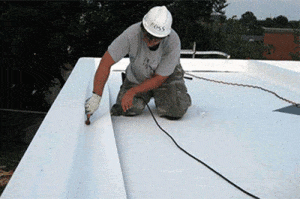


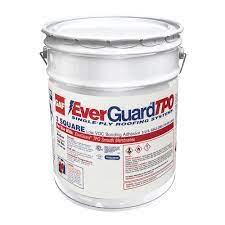

Some common TPO detail and accesories pictured above
How energy efficient is TPO roofing?
In 2024, it’s crucial to assess the energy efficiency of TPO roofing and its impact on your property.
- Solar Reflectivity for Cooling Efficiency: White TPO roofing boasts an impressive Solar Reflective Index (SRI) of around 79. This high SRI rating ensures compliance with the stringent code requirements in Austin and Central Texas, without the need for additional expenses related to reflective coatings. Essentially, TPO excels at reflecting the sun’s rays, effectively reducing heat absorption and, consequently, maintaining lower temperatures within the roof and the building’s interior. This translates to reduced reliance on air conditioning systems and, subsequently, lower electricity costs. Many property owners experience substantial energy savings ranging from 25% to 35%.
- Exceeding Energy Star Specifications: White TPO roofing goes above and beyond by not only meeting but exceeding Energy Star specifications. This means it actively contributes to the energy efficiency of your property, reducing your carbon footprint and energy consumption.
- Enhancing Energy Savings with Rigid Insulation: To further enhance energy efficiency, it’s common to incorporate rigid insulation, with Polyisocyanurate (often referred to as ISO) being a popular choice. ISO boasts an impressive R value of 5.7 per inch, making it an effective thermal insulator. During TPO roofing installation, it’s not uncommon to add anywhere from 1 to 8 inches of Poly Iso insulation. This additional insulation significantly amplifies energy savings, with R values reaching up to an impressive R-47.2 or even higher.
In 2024, the energy efficiency of TPO roofing is more vital than ever. With its remarkable solar reflectivity, compliance with Energy Star standards, and the option to incorporate superior insulation, TPO roofing remains a wise choice for property owners aiming to reduce energy consumption, cut utility costs, and contribute to a more sustainable and environmentally friendly future.
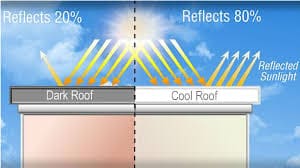
How long does TPO last?
- TPO Roofing Longevity: Manufacturers of TPO roofing systems typically offer warranties that extend up to 30 years, providing assurance of their durability and reliability. However, in practice, TPO roofs often exceed these warranty periods, with a realistic life expectancy ranging between 30 and 50 years before the need for replacement arises.
- Maintenance for Prolonged Service: Just like any roofing material, the key to maximizing the lifespan of TPO roofing lies in proper and timely maintenance. Regular maintenance, when performed correctly, can significantly extend the life of your roof. When TPO roofing is expertly installed and diligently maintained, it has the potential to deliver many years of dependable and trouble-free service.
TPO roofing remains a resilient and long-lasting choice for property owners. With manufacturer warranties supporting their durability and proper maintenance practices in place, TPO roofs are well-equipped to provide decades of reliable performance, offering peace of mind to those who choose them for their properties.
Is there a warranty for TPO roofs?
Certainly, TPO roofing warranties are an essential aspect to consider when investing in this roofing system. In 2024, here’s what you need to know about TPO roofing warranties:
- Manufacturer-Specific Warranties: Each TPO roofing manufacturer offers its own warranty coverage, and the specific terms and conditions can be found on the manufacturer’s website or provided documentation. These warranties can vary from one manufacturer to another, so it’s advisable to conduct thorough research and review the warranty details before making your roofing choice.
- Variability in Warranty Quality: It’s worth noting that not all TPO roofing warranties are created equal. Some manufacturers may offer more comprehensive and robust warranty packages, while others may have limitations. Therefore, it’s crucial to carefully assess the warranty terms, including coverage duration and what is included, to ensure it aligns with your roofing needs and expectations.
- Transition Roofing’s Warranty: Transition Roofing, as a certified roofing company, provides a common warranty option known as a 20-year NDL (No Dollar Limit) warranty. This type of warranty offers substantial coverage and can provide added peace of mind to property owners. However, it’s essential to understand that meeting specific installation requirements and contracting with a certified roofing company like Transition Roofing may be necessary to qualify for the manufacturer’s NDL warranty.
As you explore TPO roofing options, understanding the warranty offered by the manufacturer and any additional warranties provided by certified roofing companies like Transition Roofing is crucial. Properly assessing these warranties will help you make an informed decision and ensure that your roofing investment is protected for years to come.
The decision to invest in a TPO roofing system may initially seem straightforward, but it’s a multifaceted choice that warrants careful consideration. If you’re seeking comprehensive information regarding the advantages and potential drawbacks of TPO roofs tailored to your specific building, Transition Roofing is your trusted partner for guidance on your roofing project.
We’re Here to Assist You: At Transition Roofing, we understand the importance of making informed decisions about your roofing needs. Whether you have questions about the expected lifespan of your new roof, the most suitable warranty options for your building, anticipated energy-saving benefits, or any other critical factors that influence your roofing selection, we’re here to provide answers.
Connect with Transition Roofing: Don’t hesitate to reach out to Transition Roofing today to initiate a productive conversation. Our team of experts is readily available to address all your inquiries regarding material selection, the scope of necessary work, and more. We take pride in delivering exceptional customer service from the very beginning to the completion of your roofing project, ensuring you have the peace of mind you deserve when making this significant decision.
Contact Us Today: To get started on your Commercial roofing project and receive expert guidance, please don’t hesitate to call us at (512) 416-6000 or simply complete the contact form below. Transition Roofing is dedicated to assisting you in making the right choices for your roofing needs, and we look forward to being your trusted partner in this important endeavor.

